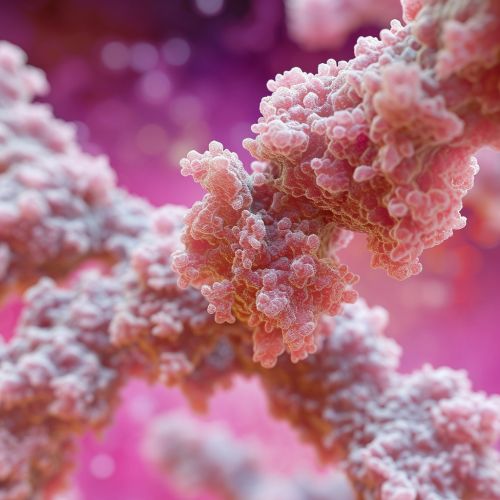Interleukin-22 receptor
Overview
The Interleukin-22 receptor (IL-22R) is a type of protein that is part of the cytokine receptor family. It is primarily expressed on the surface of epithelial cells and is involved in immune responses, inflammation, and tissue repair. The IL-22R is a heterodimeric receptor complex that consists of two subunits: IL-22R1 and IL-10R2.


Structure
The IL-22R is composed of two subunits, IL-22R1 and IL-10R2. The IL-22R1 subunit is specific to the IL-22R, while the IL-10R2 subunit is shared with other cytokine receptors, such as the IL-10R and IL-26R. Both subunits are type I transmembrane proteins, meaning they have a single transmembrane domain with their N-terminus on the extracellular side and their C-terminus on the intracellular side.
Function
The primary function of the IL-22R is to bind to the cytokine IL-22. This binding initiates a cascade of intracellular signaling events that lead to the activation of the STAT proteins, specifically STAT3. This results in the transcription of genes involved in cell proliferation, survival, and the production of antimicrobial peptides.
Role in Disease
Abnormal function or expression of the IL-22R has been implicated in several diseases. Overexpression of IL-22R has been observed in various types of cancer, including colorectal cancer, breast cancer, and pancreatic cancer. In these cases, IL-22R promotes tumor growth and survival. Conversely, a lack of IL-22R signaling has been linked to inflammatory diseases such as psoriasis and inflammatory bowel disease.
Therapeutic Potential
Due to its role in disease, the IL-22R is a potential target for therapeutic interventions. For example, blocking the IL-22R in cancers where it is overexpressed could potentially inhibit tumor growth. Conversely, enhancing IL-22R signaling in diseases characterized by inflammation could help to reduce symptoms.
